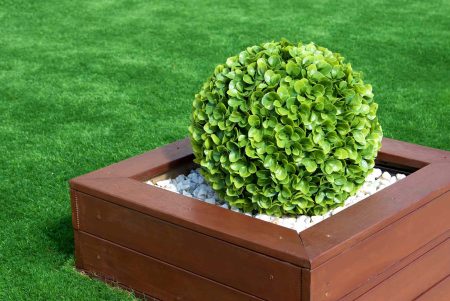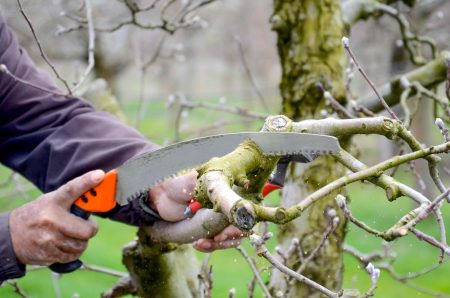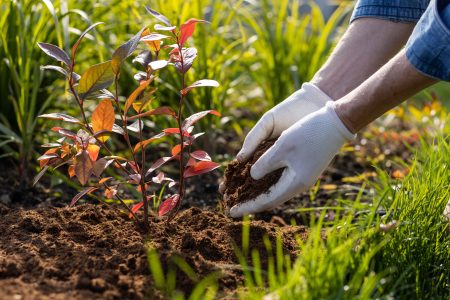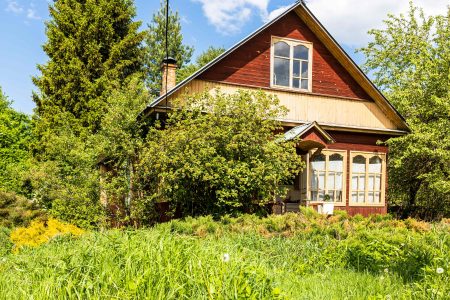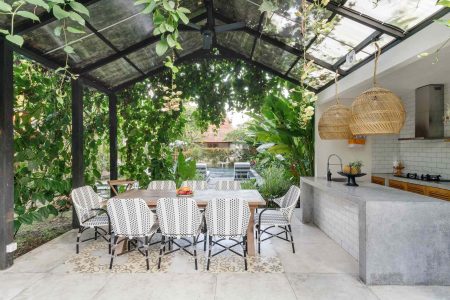Tall trees and shrubs can overshadow single story homes and make small yards feel crowded and overwhelming. However, there are plenty of small or dwarf plants that have all the beauty of their taller plant cousins, but come in a compact package that’s perfectly sized for low profile homes with limited garden space.
From flowering mini trees to shrubs with eye-catching shapes, here are 12 dwarf plants for front yard landscaping that will suit any garden style and the look of any home.
Want more gardening tips? Sign up for our free gardening newsletter for our best growing tips, troubleshooting hacks, and more!
-
01
of 12Flowering Quince
Despite its noteworthy cold tolerance, the flowering quince has a decidedly tropical look with big and showy flowers that come in vivid shades of pink, red, and orange, or brilliant white. When mature, flowering quinces stand at about three to 10 feet tall, and they may produce edible fruit, which needs to be cooked before eating.
- USDA Zone: 5 to 9
- Light: Full sun
- Water: Moderate
- Color Varieties: Pink, red, orange, white
-
02
of 12Dwarf Weeping Cherry
Weeping cherries are true statement plants with long, sweeping branches that dance in the wind and explode with color when the plant blooms in spring. All weeping cherry trees stay under 25 feet tall, but dwarf varieties are even more compact—growing six feet high or less.
- USDA Zone: 5 to 8
- Light: Full sun
- Water: Moderate
- Color Varieties: Pink, white
-
03
of 12Dwarf Japanese Maple
Full-sized Japanese maple trees can stretch over 30 feet tall, but dwarf varieties like ‘coonara pygmy’ and ‘crimson queen’ typically grow between three and 10 feet high, and are ideally sized for smaller homes and gardens. These elegant trees are mostly known for their distinctly shaped and colorful leaves, which come in a range of thrilling shades and get even more vivid in autumn.
- USDA Zone: 5 to 8
- Light: Full sun to part shade
- Water: Moderate
- Color Varieties: Red, green, bronze, purple, yellow
-
04
of 12Sargent Crabapple
Growing between six and 10 feet tall, the Sargent’s crabapple tree produces delicate pink buds in spring, which develop into white flowers and, later, bright red fruit that attracts wild birds. If you love the look of mini crabapples, other dwarf varieties like ‘Lollipop’ and ‘Aros’ are worth a try, too.
- USDA Zones: 4 to 8
- Light: Full sun
- Water: Moderate
Continue to 5 of 12 below -
05
of 12Saskatoon Serviceberry
Like the fringe tree, Saskatoon serviceberries are native to North America, and they attract butterflies with their fragrant spring flowers and wild birds with their summertime berries. Growing at a rate of around one to two feet per year, these fast-growing shrubs max out at around 10 feet in height, and are hardy enough to grow in moist soil, sun or light shade, and areas with intensely cold winters.
- USDA Zone: 2 to 8
- Light: Full sun to part shade
- Water: Moderate
-
06
of 12Corkscrew Hazel
Also known as Harry Lauder’s walking stick, the corkscrew hazel provides year-round interest with bright yellow springtime catkins, edible nuts, and intriguing, twisted branches that show best in winter. Growing to about 10 feet tall, the corkscrew hazel looks stately on its own or when planted with lower growing shrubs and perennials. It’s known to attract birds and pollinators too.
- USDA Zone: 4 to 8
- Light: Full sun to part shade
- Water: Moderate
-
07
of 12Merlot Redbud
Another flowering beauty, the ‘merlot’ redbud produces wine-colored buds in spring, which are highly attractive to birds and pollinators. Growing to just 12 feet in height, this small tree can be used as a specimen plant in sunny or lightly shaded yards, or grown in the rear of flower beds to serve as a backdrop for lower growing shrubs and perennials.
Aside from Merlot, there are a few other dwarf redbud varieties that are appropriate for limited spaces, like ‘lavender twist’ and the Chinese redbud tree.
- USDA Zone: 6 to 9
- Light: Full sun to part shade
- Water: Moderate
-
08
of 12Dwarf Alberta Spruce
If you’re looking for a pint-sized evergreen tree for year-round garden color, the dwarf Alberta spruce is always a popular pick. This plant is impressively cold tolerant, thrives in a range of soil types, and only grows to about 13 feet in height. Other small evergreens, like the dwarf Hinoki cypress and dwarf Scotch pine, bring a similar look and feel to small gardens, but they have a different silhouette, color, and needle shape.
- USDA Zone: 3 to 8
- Light: Full sun
- Water: Moderate
Continue to 9 of 12 below -
09
of 12Powder Puff Tree
Maxing out at around 15 feet tall, powder puff trees bring a whimsical feel to landscape designs with their fluffy, pink or red flowers that bloom for months on end. Just keep in mind that these plants require full sun to grow, and they’re only winter hardy in zones 9 through 11.
- USDA Zone: 9 to 11
- Light: Full sun
- Water: Moderate
- Color Varieties: Pink, red
-
10
of 12Star Magnolia
Star magnolias are much smaller than standard magnolia trees, growing between 15 to 20 feet tall. These early bloomers produce bright white flowers in early spring before their leaves appear, and their slow growth rate ensures they won’t overwhelm small garden spaces. Other mini magnolia varieties to try include ‘Ann’ and ‘baby doll,’ which grow to about 15 feet high and produce white or deep pink blooms.
- USDA Zone: 4 to 9
- Light: Full sun to part shade
- Water: Moderate
- Color Varieties: White, pink
-
11
of 12Fringe Tree
Not to be confused with the Chinese fringe tree, the North American fringe tree or “old man’s beard” tree is a small flowering tree that’s native to the eastern United States. Blooming from May to June, fringe trees stay under 20 feet tall and produce a wealth of fragrant, white “fringed” flowers that appeal to birds, butterflies, and bees.
- USDA Zone: 3 to 9
- Light: Full sun to part shade
- Water: Moderate
-
12
of 12Pagoda Dogwood
There are a number of dogwood trees that stay relatively small, including varieties like ‘dwarf pink’ and ‘little poncho.’ However, the pagoda dogwood is an especially popular dogwood variety for front yard landscaping thanks to its graceful arching form, which stays under 25 feet high, and fragrant white flowers that bloom from late spring through early summer.
- USDA Zone: 3 to 7
- Light: Full sun to part shade
- Water: Moderate
Read the full article here




